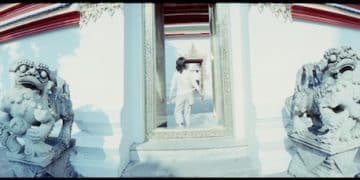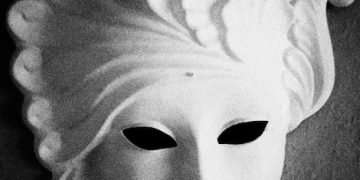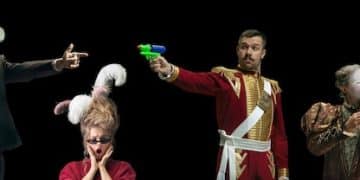The Enduring Allure of “The Crown”: A Deep Dive into Royalty and Power
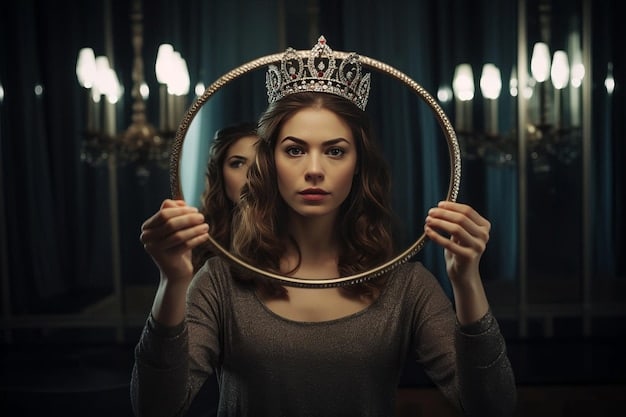
“The Crown” stands as a captivating historical drama, offering a meticulously crafted exploration of the British monarchy’s evolving role, its intricate power dynamics, and the personal sacrifices demanded by duty, making it a compelling watch for enthusiasts of real-life history and compelling narrative.
Delving into the opulent yet often isolating world of the British monarchy, “The Crown” has captivated audiences globally, offering an unprecedented look behind the gilded doors of Buckingham Palace. This series, renowned for its meticulous attention to historical detail and compelling character arcs, has redefined what a historical drama can achieve. It invites viewers to witness the triumphs and tribulations of one of the world’s most enduring institutions, presenting a narrative that is as deeply personal as it is globally significant. Through its intricate portrayal, “The Crown” manages to shed light on how history shapes humanity, transforming the abstract concept of governance into a deeply human story of sacrifice, duty, and resilience.
The Genesis and Evolution of “The Crown”
The journey of “The Crown” began with a vision to chart the entire reign of Queen Elizabeth II, a monumental undertaking that has spanned several decades within the narrative and multiple acclaimed seasons. From its inaugural episode, the series set a high bar for historical accuracy and dramatic storytelling, quickly establishing itself as a flagship production. It moves beyond mere biography, aiming to capture the essence of an era, reflecting societal shifts and geopolitical events through the lens of the monarchy.
Key to its success is the ambitious casting strategy, with different actors portraying the main characters as they age through the decades. This approach, while initially a bold gamble, has paid off immensely, allowing for a fresh perspective and renewed energy with each new chapter. It underscores the show’s focus on the institution itself as a living entity, rather than solely a collection of individual personalities. The commitment to historical authenticity, from painstakingly recreated sets and costumes to the diligent research into significant events, imbues the series with a sense of gravitas and believability that resonates deeply with viewers. Each season meticulously peels back layers of public persona, revealing the profound human experiences hidden beneath the weight of the crown.
Crafting a Narrative: From Script to Screen
The writing process for “The Crown” is renowned for its depth, often involving extensive archival research, consultations with historians, and interviews with individuals who had connections to the royal household. This rigorous approach ensures that while dramatic liberties are taken for narrative cohesion, the essence of historical truth is preserved. The creative team strives for a balance between factual accuracy and compelling storytelling, recognizing that the human element is what truly draws audiences in. They explore not just what happened, but delve into the implied motivations, emotional tolls, and strategic considerations that might have influenced key decisions.
- Extensive Archival Research: Deep dives into historical documents, private correspondence, and parliamentary records.
- Consultation with Historians: Experts provide vital context and verify factual claims, ensuring verisimilitude.
- Character Development: Focus on inner conflicts and personal sacrifices rather than just public actions.
The transition from script to screen involves an equally meticulous process, with production design, costume departments, and casting directors working in concert to bring each era to life. The visual storytelling elements are as crucial as the dialogue, with every detail contributing to the immersive experience. The evolution of the monarchy, from the post-war austerity of the 1950s to the more modern challenges of the late 20th century, is visually represented through changing fashion, architecture, and technological advancements, creating an authentic backdrop for the narrative. The dedication to this level of detail cements “The Crown” as a benchmark in prestige television, allowing audiences to truly inhabit the historical periods depicted.
The Art of Casting: Portraying Iconic Figures
One of the most remarkable aspects of “The Crown” is its inspired casting, particularly the decision to refresh the main ensemble every two seasons to reflect the aging of the characters. This bold choice could have been a catastrophic misstep, potentially alienating viewers who had grown accustomed to specific actors. Instead, it has been a stroke of genius, allowing the series to seamlessly transition through various periods of Queen Elizabeth II’s reign while maintaining a consistent level of dramatic excellence. Each actor inherits the daunting task of portraying globally recognized figures, yet they consistently deliver performances that are not merely imitations, but profound interpretations of complex individuals.
The challenge of embodying such iconic figures is immense. Performers must capture not only the physical likeness and vocal mannerisms but also the emotional depth and often unseen vulnerabilities of people who have lived under intense public scrutiny. This requires a nuanced understanding of their historical context, psychological makeup, and the inherent conflict between their personal desires and public duties. The ability of the cast members to disappear into these roles, evoking empathy and understanding for figures often perceived as distant and formal, is a testament to their talent and the meticulous guidance provided by the show’s creators. This artistic choice elevates “The Crown” beyond a simple recounting of history, turning it into a character study of epic proportions.
Embodying Royalty Through the Decades
The progression of the Queen Elizabeth II’s portrayal, from Claire Foy’s youthful and determined monarch to Olivia Colman’s more seasoned and sometimes weary ruler, and finally to Imelda Staunton’s reflective and enduring sovereign, showcases the brilliant execution of this casting strategy. Each actress brought a distinct understanding of the Queen at different stages of her life, allowing viewers to witness her transformation from an unexpected young sovereign into a world leader. This continuity of character, despite the changing faces, speaks volumes about the consistency of writing and direction.
- Claire Foy: Captured the early years of duty and nascent power.
- Olivia Colman: Depicted the middle years, grappling with personal and political challenges.
- Imelda Staunton: Portrayed the later reign, marked by resilience and reflection.
Beyond the Queen, the supporting cast members, from Prince Philip to Princess Margaret, Princess Diana, and Margaret Thatcher, have also delivered exceptional performances. These portrayals are crucial in providing the rich tapestry of relationships, conflicts, and personal dramas that define the series. The ensemble’s collective ability to embody such well-known personalities, often under the weight of enormous public expectation, is a key factor in “The Crown’s” enduring appeal and critical acclaim. It’s not just about what they do, but how they feel and react to the immense pressures of their unique lives within the royal institution.
Many actors have spoken about the extensive preparation involved, including dialect coaching, movement training, and deep dives into archival footage and biographies. This dedication allows them to inhabit these roles with a level of authenticity that transcends mere imitation. Their commitment to understanding the complexities and nuances of their characters ensures that each portrayal feels genuine and multi-dimensional, enriching the overall narrative and drawing viewers deeper into the royal saga. The sheer talent displayed across the board is a constant highlight, reinforcing the show’s status as a masterclass in ensemble acting.

The Weight of the Crown: Duty Versus Personal Life
At its core, “The Crown” is a profound exploration of the inherent tension between personal aspirations and the relentless demands of royal duty. This central conflict forms the backbone of almost every character’s arc, particularly that of Queen Elizabeth II. Viewers witness repeatedly how personal desires, romantic attachments, and familial loyalties are often subjugated or outright sacrificed on the altar of monarchy. The series masterfully illustrates the profound isolation that can accompany extraordinary power, depicting a life where privacy is a myth and every action is scrutinized.
The show delves into the paradox of being simultaneously at the pinnacle of societal structure and yet profoundly constrained by it. The characters are often depicted yearning for normalcy, for the freedom to choose their paths, or even just for uncomplicated personal relationships. However, the institution of the Crown, with its unyielding traditions and expectations, invariably reasserts its dominion, reminding them of their predefined roles. This ongoing struggle provides much of the series’ dramatic tension, forcing audiences to consider the true cost of wearing a crown. It challenges perceptions of royalty, moving beyond superficial glamour to reveal the deeper, often painful human experiences beneath.
Navigating Public Scrutiny and Private Pain
Each season vividly portrays specific instances where individual happiness is overshadowed by dynastic imperative. From Princess Margaret’s thwarted romances to Prince Charles’s struggles with his predetermined future, and of course, the Queen’s own quiet sacrifices, the narrative continuously highlights this theme. The profound loneliness of the monarch, who must remain above the fray yet intimately involved in the nation’s affairs, is a recurring and poignant motif.
- Queen Elizabeth II: Constantly balancing her role as monarch with her roles as wife, mother, and sister.
- Prince Philip: Grappling with his identity and purpose as consort.
- Princess Margaret: Struggling against the constraints of royal life and her personal desires.
“The Crown” excels at showing, rather than just telling, the immense pressure that comes with being a member of the British royal family. The series frequently uses visual metaphors and subtle character interactions to convey the weight of expectation. Whether it’s the solitary figure of the Queen in her study late at night, or the strained silence between family members, the profound impact of their roles on their personal lives is palpable. This nuanced portrayal of duty versus personal desire is not just a narrative device; it’s a central philosophical question explored throughout the series, inviting viewers to reflect on the nature of leadership, sacrifice, and identity. The series offers a compelling argument that while the crown confers immense privilege, it also demands an equivalent, if not greater, measure of personal surrender.
Historical Accuracy and Dramatic License
A constant point of discussion surrounding “The Crown” is its balance between historical accuracy and dramatic license. While the series is meticulously researched, drawing from extensive historical records, biographies, and news archives, it is, first and foremost, a drama. This distinction is crucial. The creators openly acknowledge that certain events are condensed, speculative conversations are invented, and timelines are occasionally adjusted for narrative impact. The challenge lies in creating compelling television that feels authentic without misrepresenting historical facts in a significant way.
The production team has consistently aimed for emotional truth rather than strict factual verbatim, especially in private scenes. Since no one truly knows the exact words exchanged behind closed doors in Buckingham Palace, dialogue is crafted to reflect what might plausibly have been said, given the known personalities and historical circumstances. This approach allows for character development and dramatic tension that would be impossible with a purely documentary style. Critics and historians often weigh in on the show’s choices, sparking important conversations about how history is interpreted and presented to a mass audience. This discourse is arguably one of the series’ strengths, encouraging viewers to delve deeper into the historical context themselves.
Navigating the Narrative Tightrope
The series often utilizes key historical events as anchor points, around which fictionalized interactions and emotional narratives are woven. For instance, while the general outline of the Suez Crisis or the Aberfan disaster is historically accurate, the specific conversations and personal reactions of the royal family members are largely imagined. This blending of fact and fiction is a delicate tightrope walk, requiring responsible storytelling.
The costume design, set decoration, and historical footage insertions are often praised for their remarkable accuracy, contributing significantly to the show’s immersive quality. These visual details help ground the dramatic narratives in a tangible historical reality. However, it’s in the realm of personal relationships and motivations where the series takes its most significant artistic liberties, interpreting moments that were never publicly documented. This interpretive layer is what transforms historical figures into relatable characters, allowing audiences to connect with them on an emotional level. The ongoing debate about this balance underscores the powerful impact “The Crown” has had on popular culture’s understanding of British history and its monarchy.
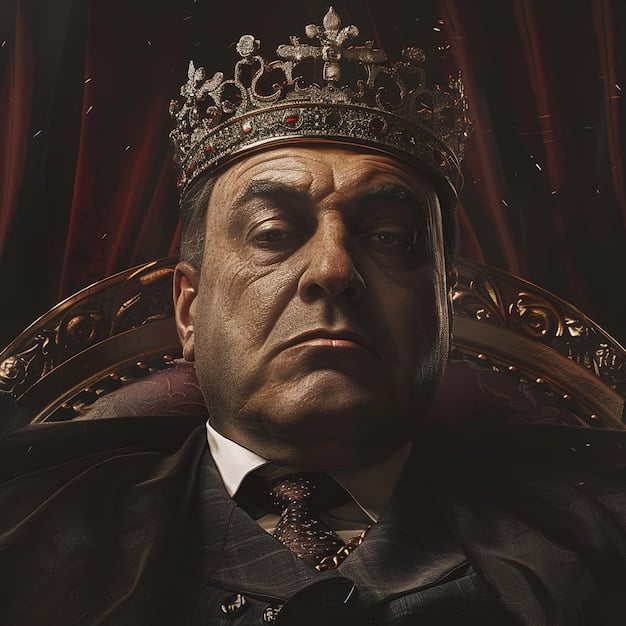
Cultural and Political Impact: Reflecting Society
“The Crown” transcends its genre as a historical drama, becoming a powerful cultural phenomenon that both reflects and influences contemporary perceptions of the British monarchy and, by extension, British society. Its release often coincides with renewed public interest in royal history, prompting debates about the institution’s relevance in the modern world, its historical actions, and the personal lives of its members. The series has introduced a new generation of viewers to pivotal moments in the 20th-century British history, from post-war austerity to the tumultuous 1980s.
The show’s portrayal of political figures, such as Winston Churchill, Margaret Thatcher, and Harold Wilson, has also sparked considerable discussion. It delves into their complex relationships with the monarch, highlighting the intricate dance between ceremonial power and executive authority. By illuminating the behind-the-scenes dynamics of power, “The Crown” provides a unique lens through which to understand the evolution of Britain’s political landscape and its relationship with the head of state. It encourages critical thinking about leadership, tradition, and change, prompting viewers to consider the impact of historical events on present-day realities. The series thus serves as more than entertainment; it’s a catalyst for broader cultural and political reflection.
Shaping Public Perception
The show’s interpretations of key events and personalities often shape public discourse. For example, its depiction of Princess Diana’s struggles or the breakdown of Prince Charles’s first marriage generated significant media attention and reignited public conversations about these sensitive topics. While the series maintains it is a fictionalized drama, its powerful storytelling often blurs the lines for viewers, leading to assumptions about historical truth.
- Increased Interest in Monarchy: Sparked renewed global fascination with the British royal family.
- Historical Re-evaluation: Encouraged critical discussions about past events and decisions.
- Tourism Boost: Royal landmarks and historical sites experienced increased visitor numbers.
Beyond the direct impact on perceptions of the monarchy, “The Crown” has also contributed significantly to the global conversation around issues such as duty, power, succession, and the role of tradition in a rapidly changing world. Its profound impact on viewership numbers and its consistent presence in awards season conversations attest to its universal appeal and its ability to resonate with audiences far beyond the United Kingdom. It has undeniably cemented its place not just as a successful TV show, but as a significant cultural artifact of the early 21st century. The series continues to prove that historical storytelling, when executed with precision and emotional depth, can exert a profound influence on contemporary thought.
The Legacy and Enduring Appeal of “The Crown”
As “The Crown” nears its concluding chapters, its legacy as one of the most ambitious and compelling historical dramas of its time is already secured. The series has not only provided an intimate, albeit dramatized, look into the lives of the British royal family but has also offered profound insights into the nature of power, duty, and national identity. Its enduring appeal lies in its ability to humanize figures often seen as distant and ceremonial, exploring their vulnerabilities, their sacrifices, and the immense personal cost of a life lived in service to the Crown.
The show’s impact extends beyond entertainment, fostering a renewed global interest in British history and the monarchy itself. It has served as a conversation starter, prompting audiences to delve deeper into the historical facts, debate the dramatic liberties taken, and reflect on the changing role of traditional institutions in a modernizing world. “The Crown” has set a new benchmark for historical drama, demonstrating that meticulous research, combined with exceptional writing, directing, and acting, can produce television that is both intellectually stimulating and emotionally resonant. Its careful depiction of an institution attempting to navigate a rapidly changing world, all while preserving its fundamental essence, ensures its place in the annals of television history.
Reflecting on a Modern Monarchy
The series’ narrative arc, spanning from the post-war era to the early 21st century, offers a unique opportunity to witness the monarchy’s adaptation—or struggle to adapt—to an increasingly democratic and media-driven landscape. It highlights the institution’s resilience but also its vulnerabilities in the face of public opinion and evolving societal values. This reflection on modernity versus tradition is a powerful sub-theme consistently woven into the fabric of the show.
Ultimately, “The Crown” will be remembered not just for its lavish production values or its parade of stellar performances, but for its courageous attempt to unravel the complexities of one of the world’s most enduring institutions. It tells a story of an extraordinary family living an extraordinary life, burdened by a legacy they did not choose but were born into. As the final episodes air, the series leaves behind a rich tapestry of history, personal drama, and philosophical inquiry, ensuring its lasting relevance for generations to come. It challenges viewers to consider the broader implications of hereditary power and the human cost of being a symbol rather than just a person.
The meticulous attention to detail, from the historical events themselves to the subtle nuances of communication, creates an immersive experience that transports viewers directly into the heart of royal life. This commitment to verisimilitude, combined with compelling human drama, is a cornerstone of the show’s appeal. It has not only entertained but also educated and provoked thought, solidifying its place as a cornerstone of modern television. The impact of “The Crown” will undoubtedly be felt for years, shaping how future generations perceive the British monarchy and the historical narrative it embodies.
| Key Aspect | Brief Description |
|---|---|
| 👑 Storytelling Excellence | Meticulous historical detail blended with compelling dramatic narratives. |
| 🎭 Impressive Casting | Actors evolve, brilliantly portraying iconic figures through decades. |
| ⚖️ Duty vs. Personal Life | Central theme exploring the sacrifices demanded by royal obligations. |
| 🌍 Cultural Resonance | Sparks global interest in monarchy and historical discussions. |
Frequently Asked Questions about “The Crown”
▼
“The Crown” is extensively researched, utilizing historical documents, biographies, and news archives. While major events are historically accurate, the series takes dramatic liberties with private conversations and some character interactions to enhance narrative flow and emotional impact. It aims for emotional truth rather than strict factual verbatim in undocumented scenes.
▼
The casting change every two seasons allows “The Crown” to accurately portray the aging of its characters over decades without relying heavily on makeup and visual effects. This approach helps maintain authenticity and allows different acclaimed actors to bring fresh perspectives to the iconic roles, supporting the show’s chronological progression seamlessly.
▼
The central theme of “The Crown” is the inherent conflict between personal desires and the demands of royal duty. It deeply explores the sacrifices made by the British royal family members, particularly Queen Elizabeth II, as they navigate their public roles versus their private lives, often leading to profound personal costs and isolation.
▼
“The Crown” has significantly shaped public perception by humanizing the royal family and providing an intimate, albeit dramatized, look into their lives. It has sparked renewed global interest in the monarchy’s history and relevance, prompting discussions and debates about their role in modern society and specific historical events.
▼
“The Crown” offers compelling drama through its blend of meticulous historical detail, complex character studies, and exploration of universal themes like duty, power, and sacrifice. Its high production values, stunning cinematography, and exceptional performances by a rotating cast make it an immersive and thought-provoking viewing experience, appealing to both history buffs and lovers of intricate narratives.
Conclusion: The Enduring Narrative of “The Crown”
“The Crown” has masterfully etched its place in television history, not merely as a recount of royal events, but as a profound narrative exploring the human cost of an extraordinary life lived under an equally extraordinary institution. Through its meticulous storytelling, transformative performances, and unwavering commitment to depicting the intricate dance between duty and desire, the series has offered audiences a unique and often poignant window into the lives of arguably the world’s most scrutinized family. Its ability to spark global conversations about history, power, and the evolution of tradition underscores its deep cultural resonance. As the final acts unfold, the show’s legacy will undoubtedly endure, cementing its status as a benchmark for historical drama and a timeless reflection on the enduring allure—and burden—of the crown.

